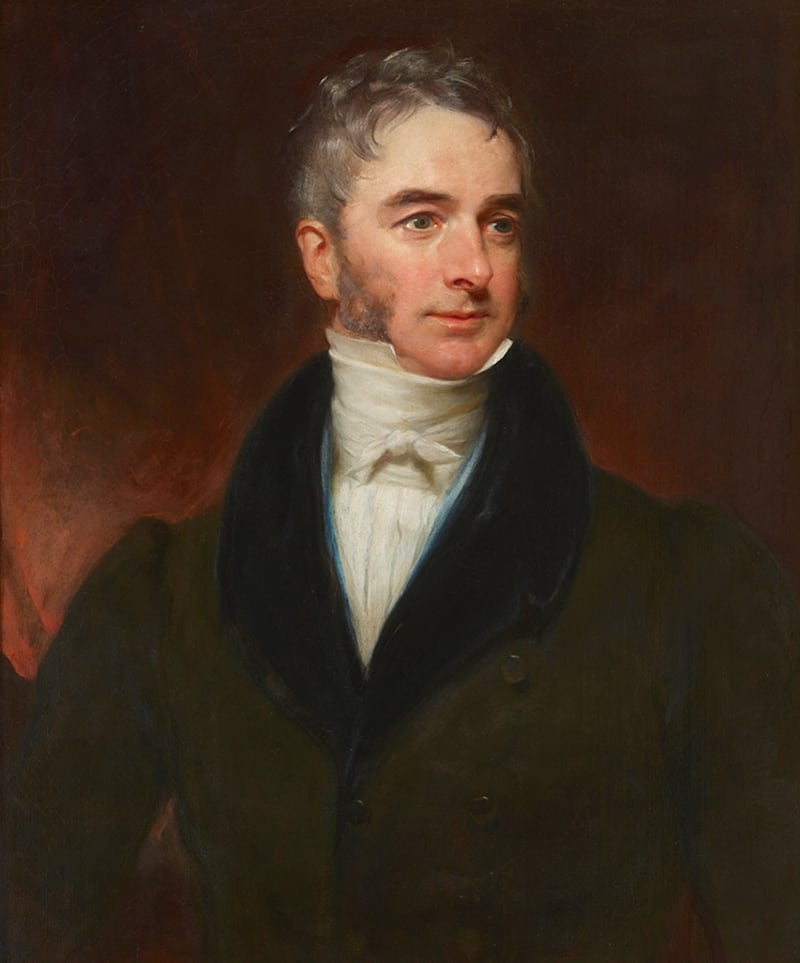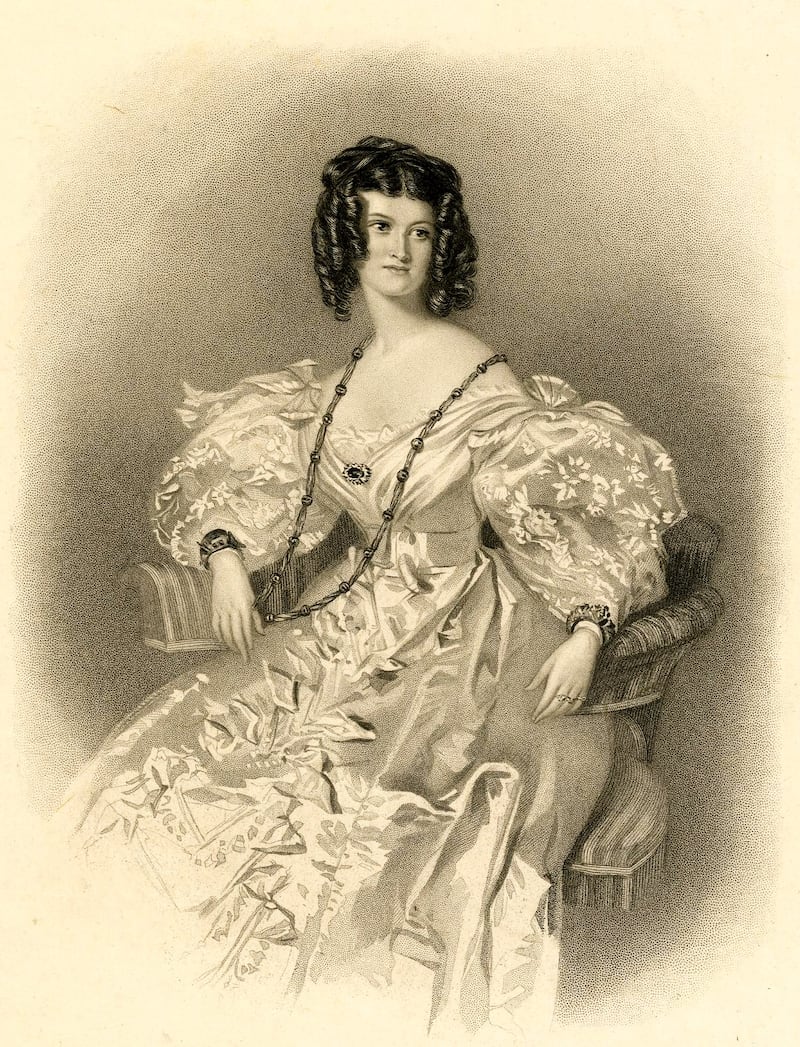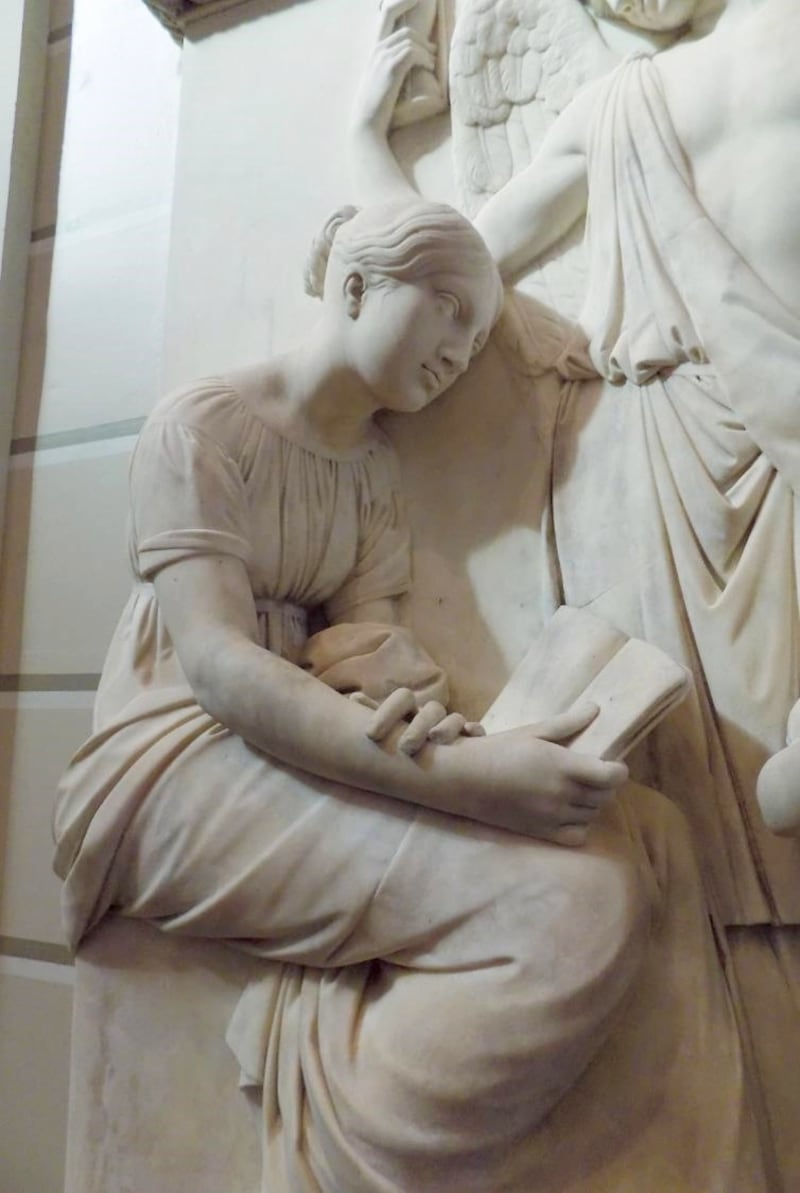“Where do you get your ideas?” is a question often put to writers, and one that’s not so easy to answer. While some ideas drift out of the ether unbidden, it is also true that writers are magpies, storing snatches of dialogue or anecdotes to be used at a later date. For several years I’ve been researching the history of Georgian houses in Dublin, and the stories and characters that I’ve uncovered have provided great inspiration for my historical novels, The Convictions of John Delahunt and The Coroner’s Daughter, the latter the One Dublin One Book choice for 2023.
Take No. 3 Fitzwilliam Square: a possible setting for a Regency romance penned by E.L. James. In 1827 it was home to Lady Elizabeth Branden, described as ‘beautiful and educated, her vivacity an acceptable substitute for wit.’ Her husband was several years her senior and ‘crippled by debts and gout’. William Lamb, later Prime Minister Melbourne, had just arrived in Ireland as Chief Secretary, and within weeks he was a regular caller to No. 3. Lamb and Lady Branden attended parties and plays as companions with ‘striking indiscretion’ and Elizabeth seemed to relish the stir caused by their public liaison.
Their correspondence speak of a relationship that was stormy and physical. Elizabeth wrote to Lamb in an undated letter, ‘Pray come this evening. I will not do anything to annoy you such as biting, hitting and so forth . . . I had no idea that I could have felt so strong an aversion and almost thirst for revenge as I did after you left me the night you nearly broke my arm . . . this morning I love you as much as ever.’
Lamb’s letters reveal a preoccupation with flagellation, starting with a recommendation of flogging for Elizabeth’s daughter, Cecilia. Later, he began to imagine taking a birch rod to Elizabeth’s maid, and then to Elizabeth herself. His description of the practice was anything but wholesome: ‘It is difficult with the most violent blows to produce much effect upon the thick skin of a dog covered with hair. But a few twigs of birch applied to the naked skin of a young lady produce with very little effort a very considerable sensation.’
READ MORE

When recalling one of the Fitzwilliam square maids he wrote, ‘I never think of her without wishing intently that I had the power to order her a birch application upon that large and extensive field of derrière, which is so well calculated to receive it.’
Lord Branden got wind of the affair and instituted proceedings against Lamb, but he was paid off. He died in Nice in 1831, his hatred for his wife apparent in his will: ‘As for my most vile and vicious wife, whose infidelity in my eyes was the least of her crimes, I donate and bequeath the sum of one shilling.’
In October 1829, Captain George Byng and his wife Agnes of No. 5 Fitzwilliam Square were out for a jaunt in the city. On Merrion Row, they collided with a carriage driven by a Dr Jacob and his brother Thomas. Jacob demanded to know Byng’s name and address, but the captain ignored him and continued to Dawson Street. Jacob and his brother chased them on foot.
Thomas testified that ‘he came up with the cabriolet in Dawson Street, nearly opposite the Mansion-house, and having caught the check rein demanded the driver’s address, but the answer he received was a blow of the whip. Stung by this, he caught the check rein firmly, and threw the horse upon his haunches. Captain Byng made several blows at him, two of which stung him severely . . . The horse became rather violent, and fell five or six times. Captain Byng at this moment made an attempt to throw up the apron, but at that instant, a lady who sat with him, threw her arms before him as if to quiet him and prevent his getting out. On seeing the lady, Mr Jacob immediately let go of his hold, and the cabriolet drove off towards Nassau Street.’


It would seem that road rage is not just a modern phenomenon. But it’s uncanny to recognise where these incidents took place nearly two hundred years after the fact. Merrion Row, the Mansion House, Nassau Street, many of the buildings that the Byngs would have passed are the same that we see today. With just a small leap of imagination, we can place ourselves in that scene.
Other discoveries were more poignant. No. 37 Merrion Square is now the headquarters of the Goethe-Institut, but for more than a century it was home to the Farrell family, Catholic landowners from Co. Meath. Thomas and Margaret Farrell bought the house in 1823. They had eight children, their eldest daughter Jeanette dying quite young in November 1838.
A tragic loss, though not particularly uncommon for the era. However, when I searched for references to Jeanette, I found her name listed in the works of John Hogan, one of Ireland’s greatest sculptors. Thomas and Margaret had commissioned a memorial relief of Jeanette in St Andrew’s Church on Westland Row. And so in I went on a quiet midweek morning and came face to face with her. She was seated, teaching the Bible to a poor child, an angel standing behind her ominously looking at an hourglass. Suddenly her loss and the grief of her parents became more palpable. It was a reminder that these were not just names in death registers or newspaper archives, but people with full and rich lives.

The historian George Trevelyan wrote, ‘The poetry of history lies in the quasi-miraculous fact that once . . . on this familiar spot of ground, walked other men and women, as actual as we are today, thinking their own thoughts, swayed by their own passions, but now all gone, one generation vanishing after another.’ Their stories are out there. We just have to go looking for them.
For details of all One Dublin One Book events in April, visit onedublinonebook.ie













